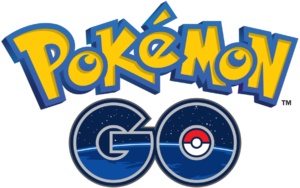 I just ran five miles.
I just ran five miles.
The last time I ran five miles was NEVER. The longest run I’ve ever been on (even with a generous definition of “run”) was The Color Run 5k – and that was with Allie as my personal pace car.
The last time I ran 5k was last night.
I had no pace car these past two days – just Pokémon. I return to you accomplished, sore, sweaty, way more knowledgable about Pokémon Go and with four more levels to show for it, but still not much more of a Pokémon fan than I was two nights ago.
How did mobile game I don’t even love get me from couch to 5k in one day, and from 5k to 5 miles the next?
The first step was deciding I was playing – and running – for efficiency. I generally only have an hour to play at night after EV heads to bed if I expect to have time to do anything else before passing out. With limited time to play, I wanted to maximize my level gain and cover a lot of physical ground to try to collect a lot of stuff – both Pokémon and items – since I’m way too weak for my local Pokémon Gyms.
The temptation is to amble constantly so you can engage with each potential encounter or to camp in an area that’s heavily lured. Here are three ways to short-circuit that to turn playing into more consistent exercise:
- Use item-dispensing PokéStops as waypoints for your walk or jog if they are plentiful enough in your neighborhood, changing pace after each stop.
- Go for a regularly-paced walk/jog but stop for all Pokémon encounters, then adding a sprint interval after you catch one. (Using incense helps with this, since it ups your random encounters.)
- Maintain regular pace until you see a new Pokémon’s silhouette on your radar, then sprint until you’ve zeroed in on it.
All three of these approaches rely on interval training, which is a core component to programs like Couch to 5k that know it’s not easy to go from couch-dwelling to distance running. Unfortunately, the Pokémon Go map is currently not too useful for planning purposes beyond a few-block radius around your current location. You might chase a prominent creator or Stop only to find yourself in a barren wasteland of augmented reality.
Luckily, Pokémon Go’s maps are based on prior Niantic game Ingress, which does have a whole-world map you can access. The interface is a bit overwhelming and not every Ingress point of interest is a Stop or Gym, so you should read this entire Polygon article if you want to know more (there’s a lot more to know). Plus, a Redditor figured out how to use the Ingress app to predict areas of high Pokémon concentration.
Over dinner, I checked the Ingress map and plotted a five-mile loop around our neighborhood, with a cluster of potential PokéStops on either end and not many in the middle. The Stops refresh on a 5-minute timer once you collect them, so I added about 2.5 minutes of steady jogging from a cluster of stops to each end of a loop so I could double back to collect them again.
(I’ve learned from friends that my non-town of a suburb has a severe PokéStop deficit compared to a swinging little ville like Collingswood, which is in turn dwarfed by a mecca like Philly.)
With my route set, I used all three of the short-circuits above for my run. I set a steady pace until I hit my first Stop, and then I all-out sprinted between Stops to elevate my heart rate with the 2.5 minutes of jogging to break it up.
After the Stops tailed off, I used incense I gained from the Stops to pump up my encounters. By the time it ran out I was at the next set of Stops. I repeated my stop process, then kept up a steady jog until a Pokémon I wanted turned up on the radar, slowing to chase it down and then sprinting for a fresh interval after I caught it.
Since I’d be covering tons of distance and gaining a lot of XP, I did two things when I first left the house.
- First, I loaded a Pokémon egg into an incubator, which is powered by the distance you travel. Not only would I make strides (ha!) towards hatching, but it made a convenient odometer.
- Then, I cracked a Lucky Egg – which cost me $.62 (since I had never been to a PokéStop before to snatch one). The egg doubles all experience points, which you get from Stops (50xp), captures (100xp; +500xp for a new type), evolutions (500xp), and egg hatches (200xp). I used a second one when the first ran out. Higher levels mean better catches, which makes my limited time more efficient, which makes it worth spending $1.24 a night for me – it’s less than most people spend daily on coffee!
What did I catch? I don’t know. Stuff? Honestly, I was so amped with adrenaline and breathing so heavily whenever I caught anything that it barely registered – I was focused on resting for a moment before more running!
I don’t know if I’m ever going to be interested in gyms or the more natural level progression of the game. Maybe! Right now, I’m happy that it’s the inspiration I need to get my body moving. That’s the habit I’m trying to form – it’s just a bonus if I become a great Pokémon Trainer along the way.